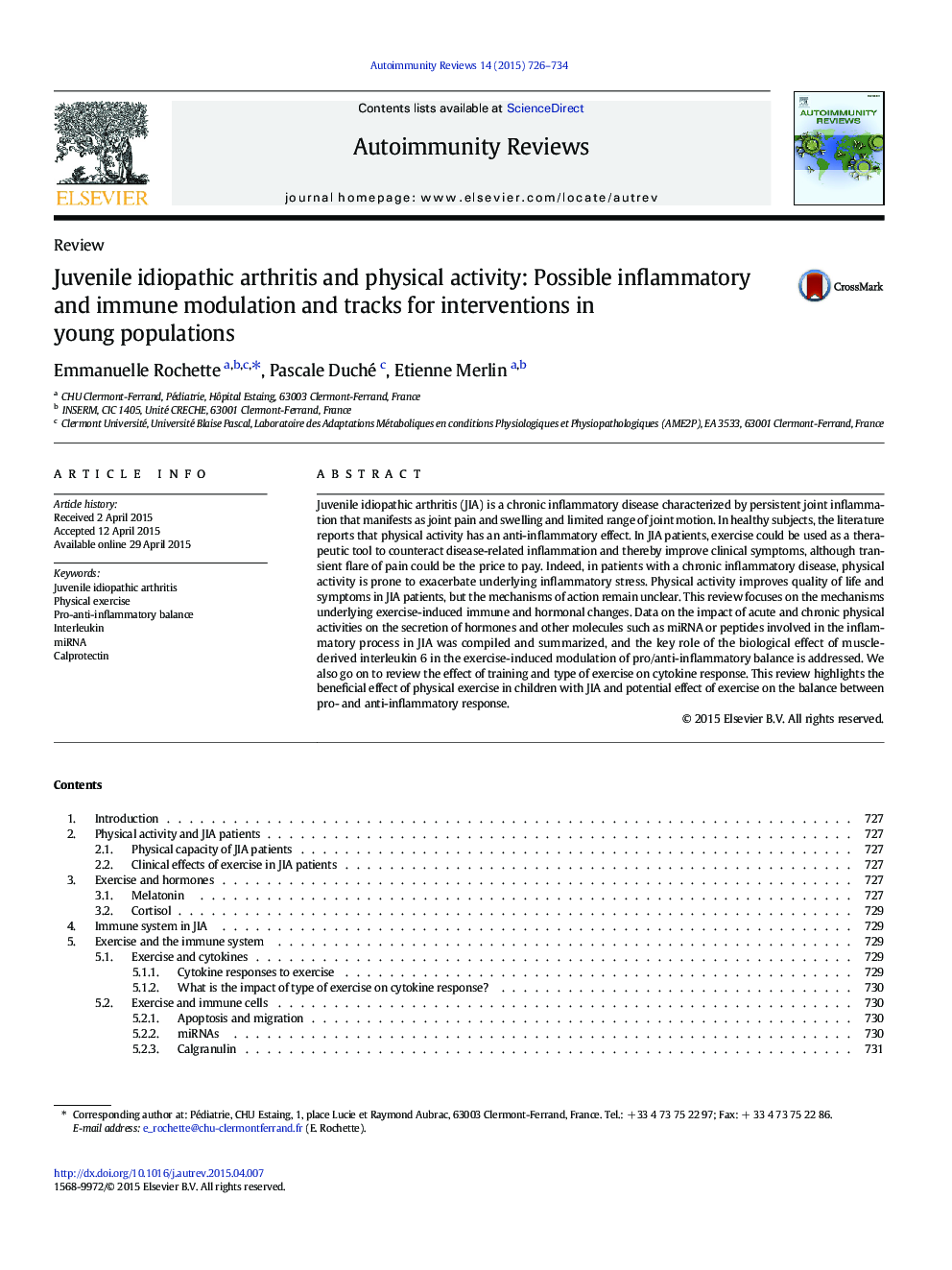| Article ID | Journal | Published Year | Pages | File Type |
|---|---|---|---|---|
| 3341414 | Autoimmunity Reviews | 2015 | 9 Pages |
•Physical activity is beneficial for capacities and quality of life of JIA patients but can trigger transient musculoskeletal pain.•The balance between pro- and anti-inflammatory in response to exercise depends mainly on subject’s state of training.•Physical exercise produces in the sytemic level an anti-inflammatory environment but also perpetuates the inflammation with increased calgranulins level. And what happens in joints?
Juvenile idiopathic arthritis (JIA) is a chronic inflammatory disease characterized by persistent joint inflammation that manifests as joint pain and swelling and limited range of joint motion. In healthy subjects, the literature reports that physical activity has an anti-inflammatory effect. In JIA patients, exercise could be used as a therapeutic tool to counteract disease-related inflammation and thereby improve clinical symptoms, although transient flare of pain could be the price to pay. Indeed, in patients with a chronic inflammatory disease, physical activity is prone to exacerbate underlying inflammatory stress. Physical activity improves quality of life and symptoms in JIA patients, but the mechanisms of action remain unclear. This review focuses on the mechanisms underlying exercise-induced immune and hormonal changes. Data on the impact of acute and chronic physical activities on the secretion of hormones and other molecules such as miRNA or peptides involved in the inflammatory process in JIA was compiled and summarized, and the key role of the biological effect of muscle-derived interleukin 6 in the exercise-induced modulation of pro/anti-inflammatory balance is addressed. We also go on to review the effect of training and type of exercise on cytokine response. This review highlights the beneficial effect of physical exercise in children with JIA and potential effect of exercise on the balance between pro- and anti-inflammatory response.
